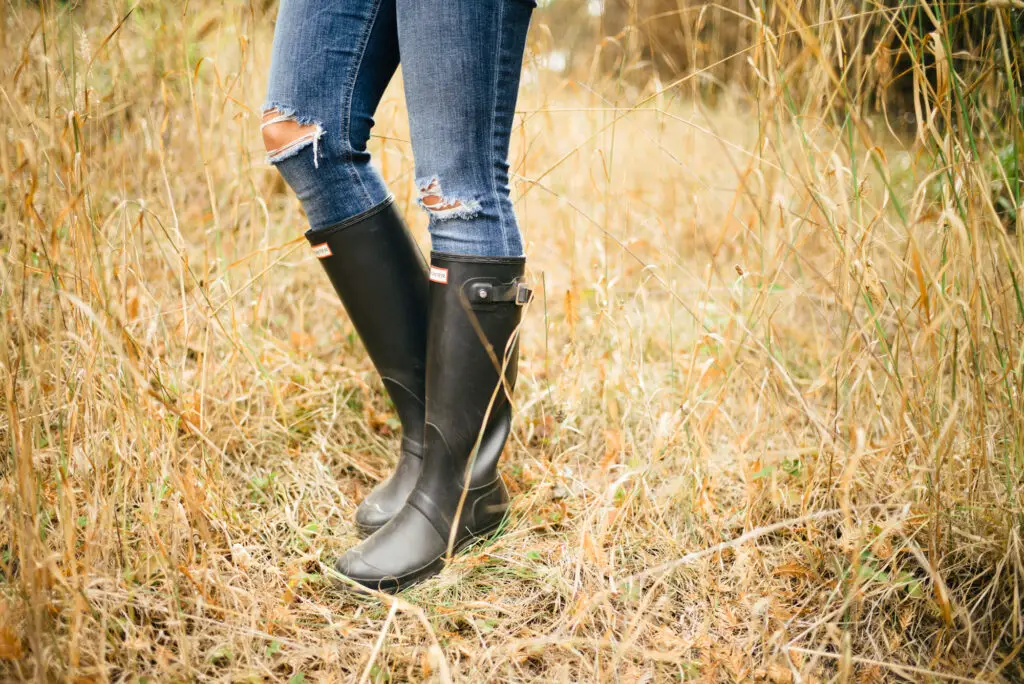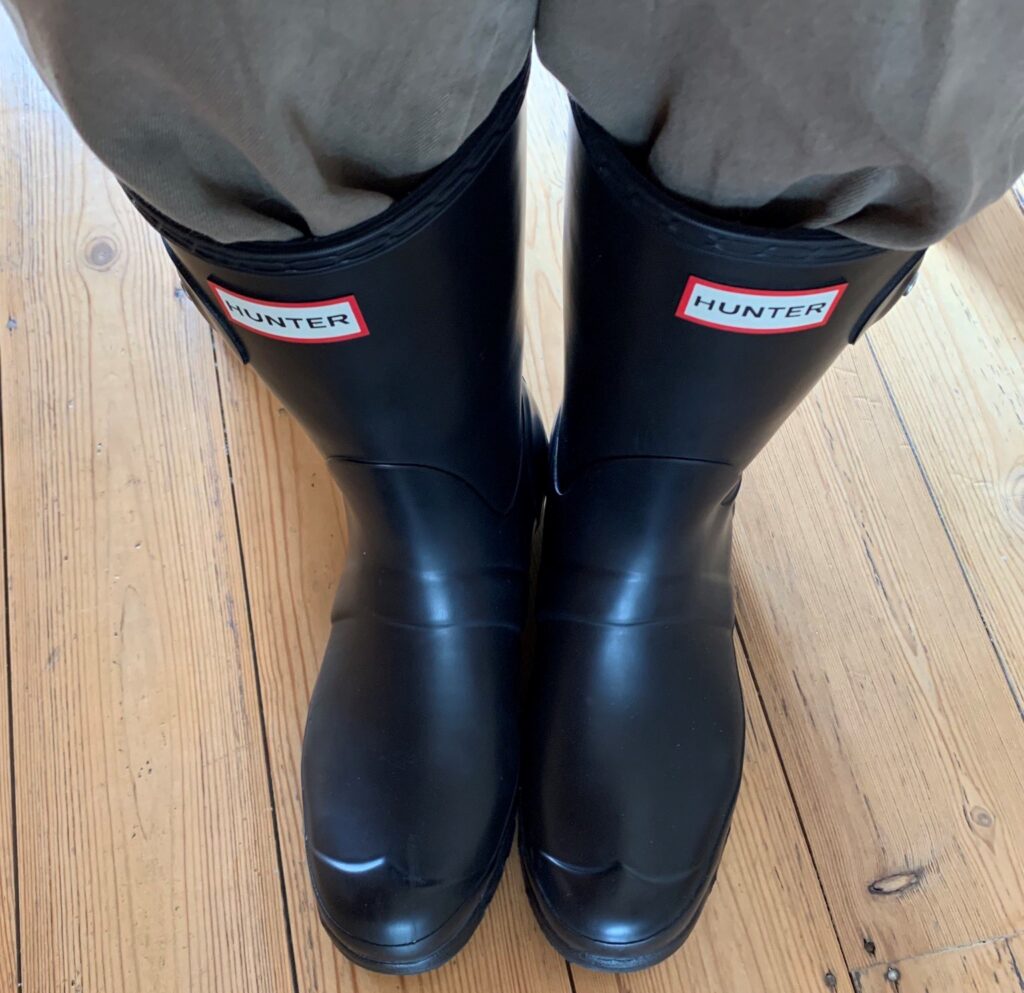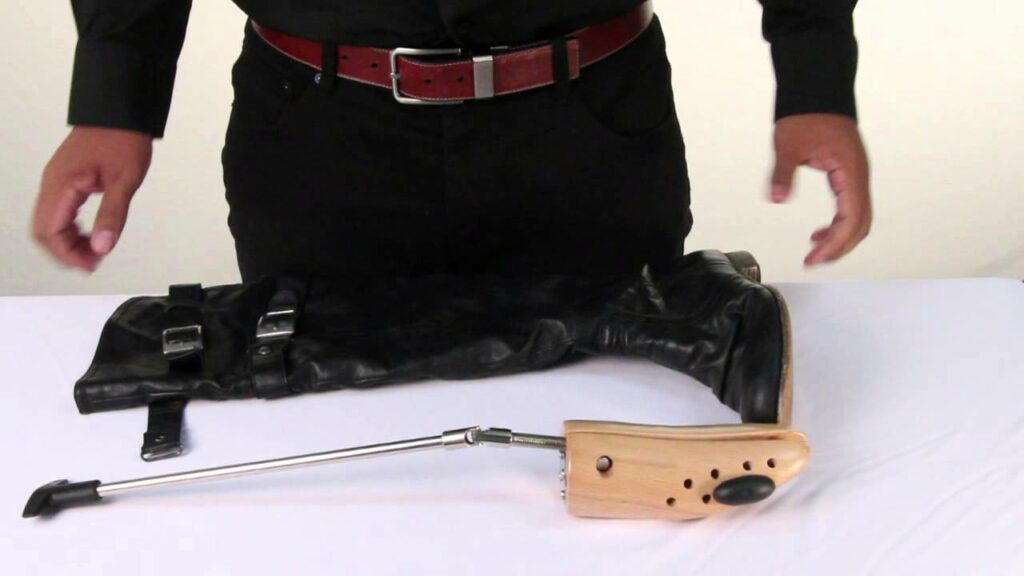As you know wearing hunter rain boots is of great significance in protecting you from the rain, muddy grounds and trenches as it was created to be water-resistant.
One of the main advantages of hunter rain boots is that they can be stretched out and can be worn without affecting your working pace.
In this article you’ll get to know more about the stretching ability of hunter rain boots which will help you to choose the better one in perfect size and for use.
The hunter rain boots are designed in such a way that they can be used in any weather conditions and in an effective way. However, one mustn’t misunderstand that they can be used during winters. The reason is that the hunter boots are designed to be water-resistant and not a good insulator.

In this next session I’ll be mentioning the ways to stretch the boots along with the pros and cons of hunter rain boots from my personal experience, so that you can have a better comprehensive knowledge on the product.
Before going to these, let me tell you about the basic things about hunter boots stretching.
Can one stretch the hunter rain boots?
Yes, you can. One of the main reasons why people wanted to know about this question is that the hunter rain boots are available only in whole size and not half-size.
This is where you can try to stretch the boots. You can stretch your boots in your calves and it is also applicable to other parts of your feet.
However, stretching hunter rain boots is a little bit of extra work as the material used to manufacture the product is made from rubber material. It is not only extra work but also will take a little time to stretch the boots.
How much do stretching boots cost?
If you need the boots stretched a half-size or full-size, you can do it yourself with a stretcher or any other DIY methods.
If you want to do it professionally by going to a cobbler you can expect a sum around (more reliably) $15 to $25.
You can expect an amount of roughly $45 if you want to stretch the calf size of your hunter rain boots.
How much do hunter rain boots stretch?
Hunter boots can be stretched eventually. One way of doing it is by giving it some time to break in, or else there’s number of ways mentioned in this article for your guidance.
Since the quality also matters, the material used for manufacturing the boots are already vulcanized and molded in the factory through different steps in order to remain in the same size for a long period.
However, you can stretch the boots in your calf and toe areas up to a few centimeters (2-2.5cm max) anything more that could ruin the quality and efficiency of the boot.
Are hunter boots supposed to be tight?
I won’t say it should be tight as wearing it could be problematic and uncomfortable while working. Experts say that hunter boots mustn’t be snug as it could affect your working pace.
So, if you wanted to stretch the boots, then you need to take utmost care or else you might end up ruining it. You should buy hunter boots which are your size or down the size.
Should I size up or size down the hunter boots?
Hunter always comes in whole sizes and is always recommended to go down if you have half-size. This means if you’ve a size of 6.6 then it is recommended to go for a size 6 rather than size 7.
By doing so, the boots will be stretched eventually. You might think that going down the size might affect walking and working comfortably, thus affecting your working pace.
However, going down the size would be more practical because eventually the boots will stretch or else you can stretch the boots through the ways I mentioned in this article. However, this won’t be the case if you go up in size, nothing can’t be done.
Do hunter boots come in half-size?
No, hunter boots don’t come in half-size. it’s always offered in whole sizes. if you’re in between the size, it’s always better to go down the size and not the other way round.
There’re many sites suggesting to go up the size, but from my personal experience I always suggest to go down the size.
Do hunter boots stretch out in the calf?
Yes. You can stretch out in the calf and other parts of the feet. If your hunter boot is newly brought, then I suggest you should give it time to break in and stretch naturally.
As time passes by and due to the frequent usage, this boot can eventually fit your feet perfectly. But, if you’re trying to stretch the boots through different techniques, then you should be extra careful as this could end up in ruining the boots.
If it still doesn’t work then you can go for any of the following techniques to stretch you hunter rain boots. However, if it is too tight then I suggest purchasing a new one.
7 Effective Methods to Stretch your Hunter Rain Boots
1.) First, use it in the home: Yes, it appears to be pretty simple and clear to figure out. When you first put on a new pair of boots, they could be tight. However, after repeated use, the material will begin to expand.

This same logic will also allow you to stretch the boots by initially wearing them at home. Wear them around the house with one or two pairs of thick socks before using them for normal work or other outdoor activities.
This will hasten the stretching process altogether. To loosen up your boots, start by wearing them for a short time and gradually increase the time.
2.) Using stretching sprays: With the advent of newer technologies, experts have come up with an innovative spray that could help you stretch your boots without taking away much of your valuable time.
All you need to do is spray the liquid on your boots and wear them until it dries. Repeat the procedure frequently until it is comfortable to wear the boots.
The spray liquid instantly enters the material of your new boots, relaxing and softening them and extending the material to a comfortable level.
3.) Freezing water method: Water expands rather than shrinks as it freezes. As a result, some people actually use this technique to extend their boots with ice.
All you want to do is, fill a few baggies with water, stuff them in your boots, and set your boots in the freezer. As the water freezes, it expands, thus forcing the boots to stretch and be in shape.
Trust me the boots will not be damaged by this method. Also, it won’t take long; the water will most likely be entirely frozen in eight, if not four, hours. You can take it out from the freezer and then dry it up.
4.) Hot bag method: This technique is similar to the freeze up technique. To begin, fill resealable or Ziploc bags with hot water and gently place them on the calf area of your boots or any other areas you want to expand. Allow the heated bags to cool before removing them from the boots.
Remove the heated bags once they’ve cooled and load your boots with old socks to help with stretching. Then put the stuffed boots in the oven or similar products for a few seconds to stretch them out even further, and then let them cool.
5.) Using hair dryer: This procedure has come in handy many times when it comes to effectively extending hunter rain boots around the calf and other places. A hair dryer is required for this approach.
To begin, put on a pair of thick cotton socks with your boots and use a medium-heat blow dryer to blow over the tight area for around 20 seconds. An additional ten seconds if you have tight calves.
Apply the same technique to any tight areas of your boot. Turn off the dryer and go for a walk in with the socks. Continue doing so until the boots have cooled off. then remove your socks and try the boots on to determine if they are now comfortable.
If they still don’t fit, go through the process carefully again. Note: Do not linger around with the dryer on a single more than twenty seconds at a time, and keep the dryer at least six inches away from the boots.
6.) Boot stretching tool: If none of these methods worked, you can purchase boot stretching tools, which are available both online and offline.

Natural fabrics are better for boot stretchers than synthetic fabrics, which may not work as well. Although expensive, boot stretching equipment can be kept for years and used on various pairs of boots.
7.) Go for professional help: If none of the following at-home solutions work, visit your local cobbler. They’re experts and have specifically built stretching equipment that can provide the necessary pressure as well as the appropriate amount of heat for stretching according to your interest.
Also, if you want to focus on stretching particularly specific areas of your boots then this method is the best and safest. However, it is possible that they will take a day or two to deliver your newly stretched boots.
Pros and Cons of Stretching Hunter rain boots
| Pros | Cons |
| You can wear it comfortably | Over stretching could affect the elasticity |
| Achieve the perfect fit | Overheating affects the material |
| Works perfectly on natural materials | Works less on synthetic materials |
| DIY methods take less time | Professional aid might take more time |
| DIY methods take less amount | Need to order the boots in advance so that you can stretch it before |
| You can stretch any part of your feet, such as calf and toe areas | Stretching professionally will cause you little amount |
Conclusion
The above-mentioned techniques can be effectively used to stretch your boots to wear them and work comfortably. Always remember to go down the size, if your size is in in-betweens.
Stretching could sometimes take more time and effort, so plan it accordingly when you buy the boots. If you think you don’t want to risk doing the techniques mentioned above, then feel free to seek help from a professional cobbler.
Always remember that hunter rain boots shouldn’t be snug, they should be worn in perfect fit and comfortably otherwise it might affect your working pace.







